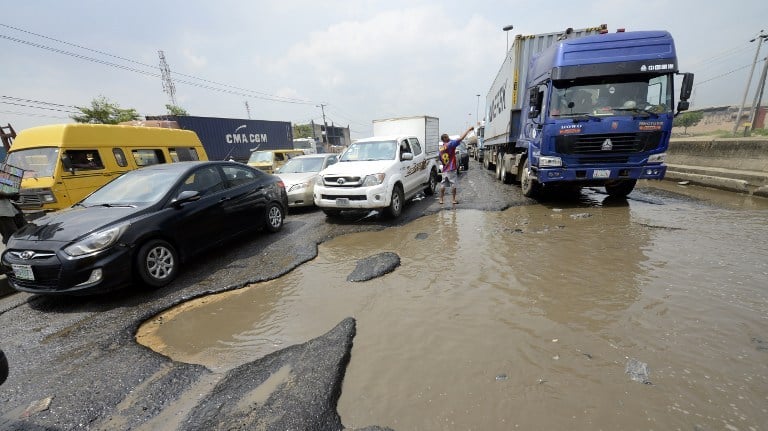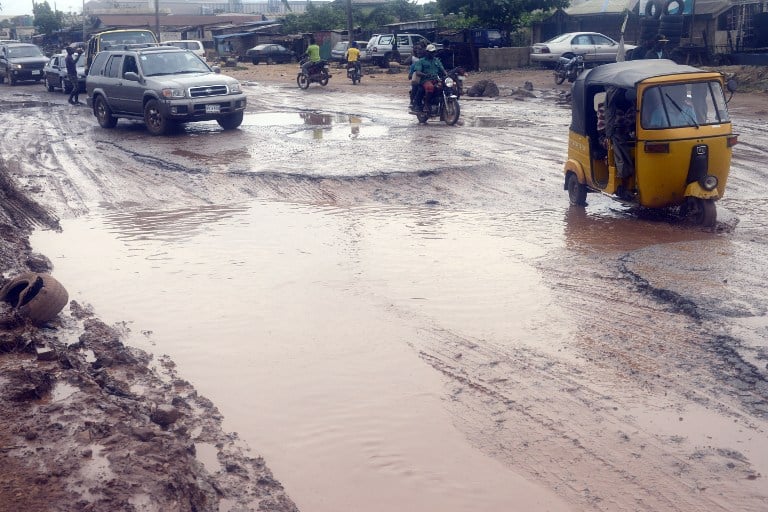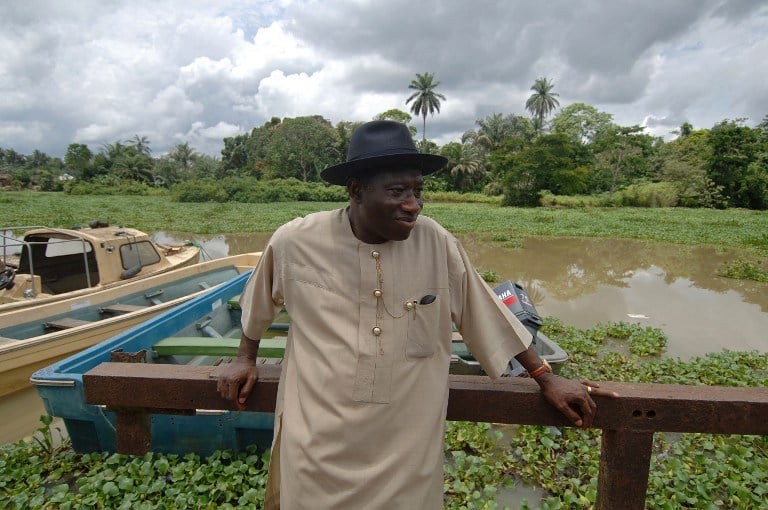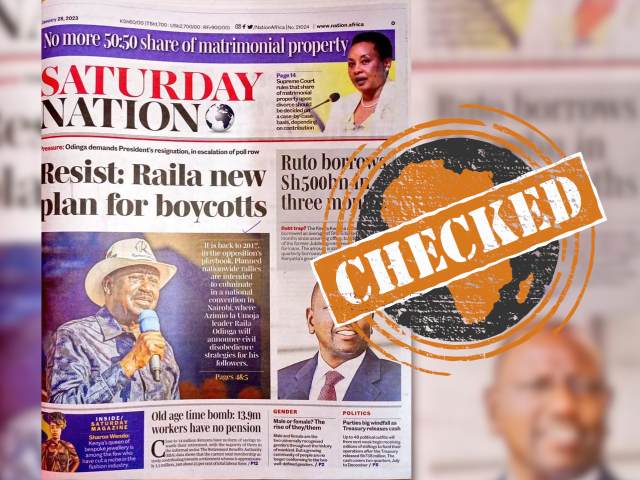This article is more than 9 years old
Nigeria’s President Goodluck Jonathan recently announced his second term bid and made several claims about his government’s achievements, including improvements to road networks in the country.
“When I assumed office in 2010, out of the 35,000km of federal roads nationwide, only about 5,000km were motorable, Jonathan said on 11 November. “Today, that number has increased to about 25,000km.”
That assertion seemed extreme, given the notoriously potholed state of Nigerian roads, so Africa Check investigated, and found that there was little evidence to support the claim.
This isn’t the first such claim

Jonathan’s words echo comments made several times in recent months by the Federal Ministry of Works, which oversees roads owned by the government.
In July the Punch newspaper quoted the minister of Works, Mike Onolememen, as saying that 71% of federal roads are now motorable.
Speaking at a meeting of the National Council of Works in October the minister repeated the claim, saying: “From about 4,500km of fair roads in 2011, President Goodluck Jonathan’s administration has revamped the kilometers of good roads to more than 25,000.” He estimated the cost of the repairs at 1.765trn naira - around $9.6bn.
One week before the presidential declaration, he repeated the claim, saying: “Over 70% of our road network is now motorable when compared to about 16% at the inception of this administration.”
There is little evidence to support it

Corroborating this is difficult. Of the government agencies involved in initiating road works, the Federal Ministry of Works provides the most detail. Examples include these speeches by the minister, in May 2014 and September 2014. Included in those are lists of some of the federal government’s road projects between 2011 and 2014.
But there is no government document that exhaustively outlines federal road projects in Nigeria, says Stanley Achonu, operations lead at Budgit, a Lagos-based start-up that tracks government spending.
Budgit has found it “difficult” to track the 25,000km of claims, he says. The available evidence “doesn’t add up to 25,000km.
At the same time, Nigerians do not seem to be particularly happy with the state of their roads. A 2013 snap poll by NOIPolls, a Gallup-affiliated agency, showed that 7 out of every 10 Nigerians consider them “unsafe”.
The government is playing with words
Achonu also points out that there’s a semantics issue at work in the way government officials refer to road works, allowing for generous interpretations of their work.
The descriptions of the work in the minister’s speeches range from “maintenance” to “rehabilitation” to “dualisation.” Which raises obvious questions. What does it mean for a road to be “maintained”?
And, as Achonu queries, if the Federal Roads Maintenance Agency (FERMA) fills a handful of potholes on the 120km stretch of road that is the Lagos-Ibadan Expressway, does that mean the entire road is then added to the catalogue of roads rendered “motorable”?
Even the president’s concept of “motorable” is a loose one. As the World Bank points out in this 2009 document there is no single agreed definition. According to Dr Adewole Oladele, a Nigerian academic who is currently the project manager of the Transportation Technology Transfer Unit at the University of Botswana, a motorable road is “accessible by a vehicle, safe, with comfort and no obstruction.” Such a road wouldn’t necessarily have to be paved, Oladele said.
But some improvements are evident

That’s not to say there isn’t some evidence of success in revamping road infrastructure. Achonu says this is especially visible in Abuja, the capital, where Budgit is tracking a number of large-scale road projects.
Apart from the Federal Ministry of Works (which oversees FERMA), there are a number of government agencies investing independently in road projects: the Subsidy Reinvestment and Empowerment Programme (set up by President Jonathan in 2012 to invest the savings from the partial removal of petrol subsidies), and the Niger Delta Development Commission (NDDC), which invests in infrastructure projects in the oil-rich Delta region.
There is also a special intervention project – the Nigerian Federal Roads Development Project – to which the World Bank is committing $330m with the aim of cutting “passenger travel times, vehicle operating costs and traffic related fatalities.”
Conclusion: Little evidence to support Jonathan’s claims
While there have been some road improvements (particularly in advance of elections, as the government seeks to win votes), there is no exhaustive proof to corroborate the president’s assertion. It would appear that the claims are exaggerated.



Add new comment